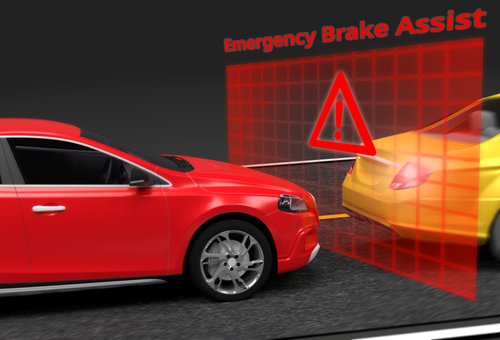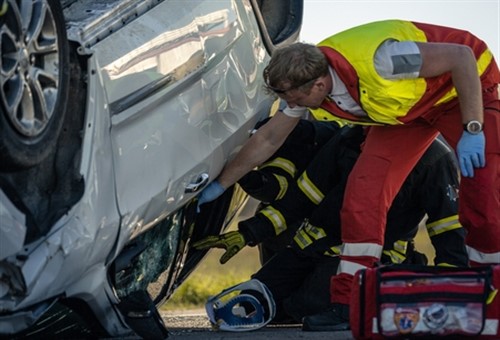
The internet is a wonderful resource, and if the truth were told, many of us in the independent repair industry have used it to hunt down service information, TSBs, waveforms, and other technical information we could not have found in any other way. However, there is another group of internet users: a group consisting of mechanics, both professional and of the DIY backyard variety that seem unable to distinguish between accurate, usable information and the rubbish contained in the thousands of so-called “car repair videos” on sites we shall not name here- mostly for legal reasons.
What we can say, however, is that most “repair videos” contain repair and/or service information that is fragmentary, outdated, inaccurate, misleading, confusing, and downright wrong, more often than not; in fact, most of the videos that deal with modern car service and repair are designed solely to boost the channel’s views and ratings.
To illustrate this point, this article will recount what happened when a young, inexperienced collision repair technician of this writer’s unhappy acquaintance advised a relative of his on how to save some money on repairing the (apparently) minor front-end damage the relatives’ imported, high-end 2020 Mercedes AMG SUV had suffered in a supermarket parking lot. This tale involves Google and car repair videos, but more specifically, videos about ADAS calibration procedures, but let us start by stating-

Since the vehicle that forms the basis of this sorry tale was destroyed in a traffic accident, we will use this stock image of an identical vehicle to illustrate the magnitude of the collision repair technician’s mistake in believing that everything can be “Googled”. In fact, it was his hugely mistaken belief that the calibration procedure for this vehicle's forward-looking cameras behind the grille could also be Googled that caused the vehicle’s autonomous braking system to fail to activate when a speeding truck cut in front of it from a side street. The subsequent broadside impact knocked the SUV over, which destroyed the vehicle and nearly killed its occupants.
It is pointless to speculate about what caused the owner of a mega-expensive vehicle to want to "save some money" on repairing the relatively minor damage that was caused when a pick-up truck reversed into the front of his parked vehicle in a supermarket parking lot. Suffice to say though, that according to the version of the story that was recounted to this writer by the hapless young collision repair technician-
Observant readers will immediately recognise this story (as recounted by the technician) as a load of hogwash since the scan tool would not have accepted a VIN that was different from the VIN of the vehicle it was connected to. Therefore, there was no way the technician could have completed a calibration procedure on the vehicle by using a different VIN, which brings us to-

This writer expressed serious reservations about the truth of some of the aspects of this sorry tale. However, the young technician merely responded by saying he “was only telling the story to understand why the vehicle’s owner was now blaming him for the accident”. The young technician obviously did not understand the meaning of the adage that says, "a little knowledge is a dangerous thing".
Nonetheless, he continued the saga by saying that a few days after the calibration procedure the vehicle’s owner returned the vehicle and said that there “seemed to be something wrong with it because the brakes sometimes activated automatically. The owner was aware that the vehicle was equipped with autonomous braking*, but it had never activated before, and especially not when the only other traffic on the road was in the oncoming lane.
* Depending on the manufacturer, this particular ADAS system is also known as-
In an attempt to identify the problem, the young technician borrowed another Mercedes-specific scan tool, and although he (according to him) found no fault codes, most likely because he did not know how to look for fault codes with a dealer-grade scan tool. In any event, he advised the owner that there did not seem to be anything wrong with the vehicle, and somewhat stupidly, recommended that the owner drive the vehicle “normally” for a few days because sometimes, these kinds of problems “resolved” themselves.
Sadly, though, it was during these few days of “normal” driving that the accident occurred that destroyed the vehicle and nearly killed the vehicle owner’s wife and two small children when the heavily laden truck drove over it.
At this point, you may again ask what could have motivated the vehicle’s owner to entrust his mega-expensive car to a mechanic that was clearly miles out of his depth. Maybe family loyalty played a part in it, or perhaps the vehicle’s owner did not fully understand the complexities of his vehicle himself, but since this writer had not met the vehicle’s owner, we will likely never learn the real reason behind his decision not to have the initial minor accident damage repaired by a Mercedes-accredited collision repairer.
Despite many unanswered questions, though, we can draw some firm conclusions from this tale. The first and most obvious conclusion is that the forward-looking cameras on the vehicle were not only not calibrated; they were also still misaligned, which is explained by the fact that the autonomous braking system sometimes interpreted oncoming traffic to be heading straight for the ill-repaired vehicle, which begs this question-
We mentioned some OEM-specific names under which autonomous braking systems are marketed by different OEM manufacturers, and while some aspects of some systems, such as software, algorithms, and/or sensing devices might be proprietary to some manufacturers or specific to a particular model, the basic operating principles of autonomous braking systems are largely the same across all applications.
As a practical matter, though, autonomous braking systems are neither designed nor intended to prevent all accidents under all possible conditions, simply because the laws of physics cannot always be overcome. However, by having the ability to recognise a potentially dangerous situation, and then to initiate braking action independently of whatever a driver may or may not do to avoid a potential accident, autonomous braking systems can, and do, greatly reduce impact forces when an accident does occur.
It is perhaps worth mentioning at this point that some advanced autonomous braking systems can bring a vehicle to a complete stop even from highway speeds if the driver does nothing to prevent an accident. Of course, this assumes that the vehicle has enough room to decelerate and stop before the accident occurs, but let us look at how these systems work in some detail, starting with-
While the specifics of one or more stages of autonomous braking might differ between various systems, the sequence of actions that comprise an autonomous braking event generally follows the same pattern. This pattern typically consists of four stages, the first of which is-
This stage typically lasts for only a few milliseconds, and it involves the analysis of input data and signals from a variety of devices that include-
This data is used not only to calculate the distance to the obstruction in the vehicle's way but also to-
This stage involves selecting an appropriate braking strategy and adjusting electronically controlled steering and suspension components to balance the vehicle and prevent excessive weight transfer from back to front or from side to side during aggressive braking.
During this stage, the system will typically also adjust active suspension components to reduce or eliminate body roll to reduce the chances that the driver may lose control over the vehicle in a skid, and it may limit throttle and steering inputs on vehicles with drive-by-wire steering and throttle control systems. One or more control modules may also assume control of the automatic transmission and the torque converter lock-up clutch to prevent the driver from making ill-considered gearshifts.
Apart from the above actions, the principal function of this stage is to pre-charge the brake system. This means that although the brakes are not activated at this point, up to 100% of the vehicle's braking performance may be available to the driver simply by applying even light pressure to the brake pedal. How much pressure is available in any given situation is determined by various control modules independently of anything a driver does, and this value could change within milliseconds to suit conditions based on how the implicated sensors “see” the situation developing or changing.
Methods to warn the driver of an impending accident can take various forms, including the following-
Note though that these warning may happen sequentially or all together depending on the seriousness of the situation. In extremely serious cases, the system may dispense with warnings altogether before activating the brakes. In all applications though, warnings will be suspended when the driver takes action, or the potential accident is avoided.
Although brake activation is the last step in an emergency braking event, this can happen in various stages, including-
Partial braking
Depending on the seriousness of the situation, partial braking can occur in one of two ways. The first is known as “Standard Braking”, which typically applies less than 50% of the vehicle’s maximum braking ability if the driver does not apply the brakes. If the driver still does not apply the brakes, the system will automatically apply what is known as “Extended Braking”, which could apply up to 100% of the vehicle’s maximum braking ability. During this stage, the brake lights may flash rapidly to alert following drivers that emergency braking is in progress.
Full automatic brake activation
This is the system’s action of last resort, and it will typically override any braking effort made by the driver. In practice, this stage can apply as much as three times the braking force of Standard Braking, and up to 100% of the maximum braking ability of the vehicle.
NOTE: It is important to note that the term “maximum braking ability” refers to the highest level of braking forces that can be applied to a vehicle without the driver losing control. However, while normal ABS braking is usually sufficient to avoid most obstacles and/or collisions, the braking forces an autonomous braking system can generate and apply are coupled with mechanisms that limit active suspension movements to keep the vehicle stable. The result of this, and other measures, such as preventing throttle inputs and gearshifts on automatics, has the combined effect of generating braking forces that no human driver can emulate.
It is also important to understand that the stages that comprise an autonomous braking event do not always happen independently of each other. While there is a certain amount of overlap between the stages, the process of how the stages follow each other, or even which stages are omitted altogether in some situations, is entirely dependent on how the implicated sensors "see" and interpret a potentially dangerous situation, which could change in milliseconds.
Therefore, depending on the seriousness of the impending collision, maximum brake activation may be the system's first and only action it takes to avoid a crash or to limit the impact forces if the crash cannot be avoided, which leaves us with this-
This cautionary tale has two purposes. The first is to press home the point that when it comes to ADAS systems and their calibration procedures, “close enough” is never good enough. For instance, a forward-looking camera or radar transponder may not be obviously misaligned, so it might still work without setting fault codes. More to the point though, it might work when it should not, as on the Mercedes SUV that interpreted oncoming traffic as threats, which means that when it is really needed to work as designed, it likely won’t.
The second purpose is to emphasise the point that Google does NOT always have the answers. Of course, Google often has the answers we need if we are prepared to pay for subscriptions to resources that host OEM-level service information, but looking for free answers in car repair videos made by people with questionable qualifications, skills, and motives, is, well, just looking for trouble.